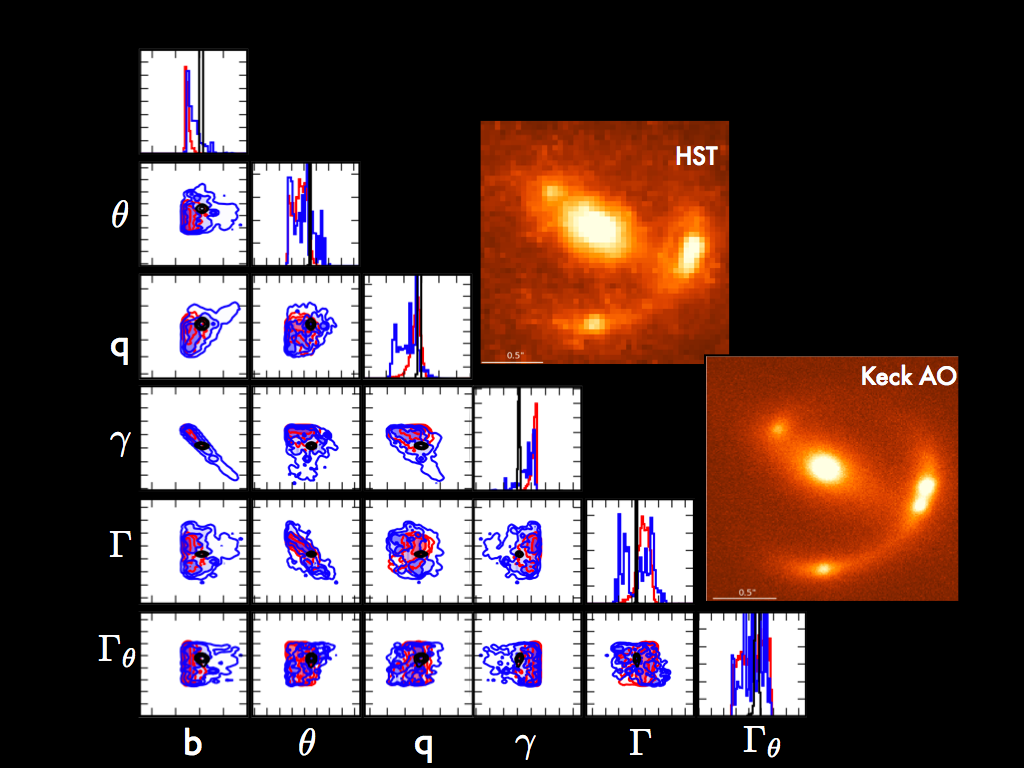Daily Image
12-01-2012Today's Colloquium: Strong Lensing at High Angular Resolution - Simona Vegetti (MIT Kavli Institute for Astrophysics and Space Research)
| Submitter: | colloquium |
| Description: | The lensed images in galaxy-scale lenses have typical separations that are on the order of an arcsecond. Any improvements in angular resolution compared to traditional ground-based imaging will provide enhanced detectability of faint objects with small angular extent and improved sensitivity to smallscale perturbations of the surface brightness of lensed extended emission. At optical and near-infrared wavelengths, there are currently two techniques for obtaining the necessary data: space-based imaging with HST and groundbased adaptive optics imaging. The SHARP survey utilizes both approaches in order to build up a statistically significant sample of lens systems for which deep high-resolution imaging has been obtained. The goal of SHARP is to utilize strong gravitational lensing to obtain precise measurements of the mass distributions in moderate-redshift galaxies and to compare these directly to theoretical predictions and simulations of galaxy assembly and evolution. A particular focus of the program is to detect and measure the mass of substructures associated with the lensing galaxies, without regard to whether the substructures are luminous or dark. In this talk, I will present the initial results by the SHARP collaboration. First, I will show that the higher resolution provided by Adaptive Optics cameras significantly outweighs any loss in signal-to-noise when constructing lens models, making ground based Adaptive Optics telescopes more powerful than HST for the detection of mass substructure in lens galaxies. Second, I will present the recent detection of a Sagittarius-like satellite at redshift ∼ 0.9 in the SHARP lens B1938+666, this is the smallest and farthest satellite currently known. Combined with a previous detection, I present the first constraint on the slope of the mass function for CDM substructure beyond the local Universe. Finally, I will show how high resolution extended lensed images, allow to measure the redshift of dark matter mass clumps. Image Above: Two-dimensional posterior probability distribution for the lens parameters of B1938+666. Black, red and blue contours show respectively the probability distribution for the K-band Keck adaptive optics imaging, for the H-band Keck adaptive optics imaging and for the H-band HST imaging |
| Copyright: | Simona Vegetti |
| Tweet |  |
